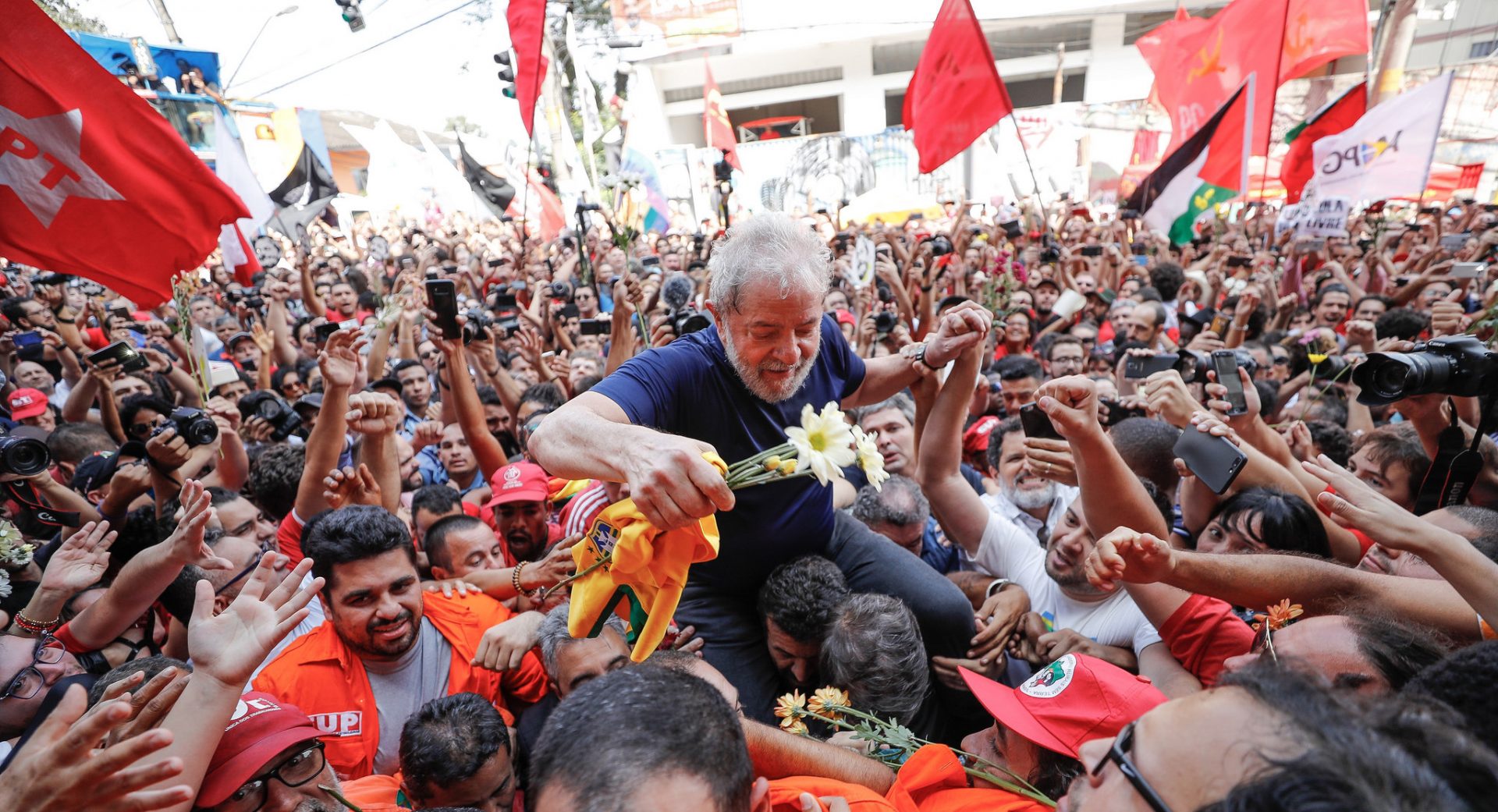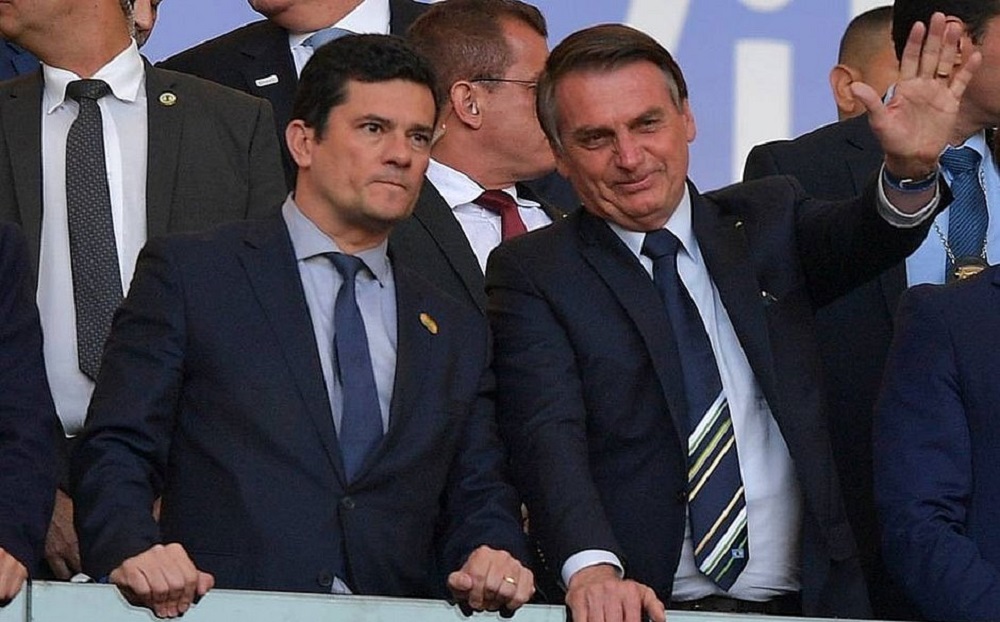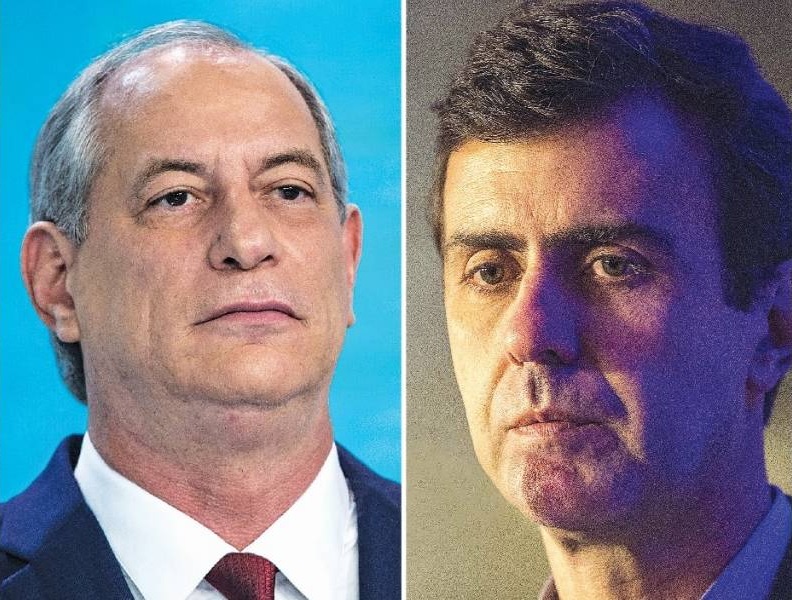RIO DE JANEIRO, BRAZIL – A survey by Atlas Político shows that the rate of those who disapprove of the incarceration of the ex-president increased from 37.4 to 44.4 percent. Even so, 53 percent have a negative image of him. Voters would elect both Bolsonaro and Moro rather than a candidate named by the former president.

The release of ex-president Luiz Inácio Lula da Silva had a positive effect on his image. The disapproval of his incarceration increased, according to a survey by Atlas, carried out on the Internet between November 10th and 11th – two days after his release – involving 2,000 people from all regions of Brazil. Compared to the July survey, the rejection rate to the ex-president’s incarceration rose by seven percentage points, from 37.4 to 44.4 percent.
Concomitantly, the perception of Lula’s image improved. In the question “Do you have a positive or negative image of Lula?” 40.7 percent rated him positively, while in August the rate was 34 percent. Nevertheless, a majority of 53 percent still has a negative image of the PT leader.
Regarding the conviction that imprisoned Lula for 580 days, the survey shows some apparently contradictory results. While 47.8 percent are in favor of his arrest and 44.4 percent against, 52.2 percent say it was fair, while 42.3 percent believe it was unfair.
“This suggests that a key portion of the population believes that Lula has already paid enough for his mistakes, which they believe led to his conviction,” explains political scientist Andrei Roman, founder of Atlas. Roman notes that this group is “willing to forgive” the PT leader.
The Atlas survey further shows that the majority of respondents, or 56.5 percent, reject the Federal Supreme Court’s (STF) ruling that last Thursday overthrew the enforcement of jail sentences before all appeals are exhausted, which led to the release, the following day, of the ex-president and others convicted by Operation Lava Jato.
Only 29.4 percent said they were in favor, while 14.1 percent did not choose to express an opinion. This points to a discrepancy between disapproval of the STF ruling and disapproval of the ex-president’s arrest. Roman believes that “most of Lula’s voters had hoped the STF would decide he was innocent, instead of adopting this solution, which essentially holds him hostage in the future, and makes him a scapegoat for the release of other well-known public figures, many of them quite controversial”.
However, the political scientist is unable to tell whether the imprisonment issue addressed by the Supreme Court, given all its complexity, has been clearly processed in the minds of the pro-Lula electorate.
“In any case, the STF’s performance in recent years has been one of many contradictions in relation to its own precedents and case law. Although very much guided by public opinion, the twists and splits of the Court have discredited it considerably, both for left and right-wing voters. The population sees these contradictions as opportunism or power struggles, which perhaps explains why the ruling does not enjoy popular support similar to the disapproval of Lula’s arrest,” he argues.
Bolsonaro’s declining popularity and Vaza Jato’s disclosures are perhaps the two most significant factors that led this segment to reconsider its position in relation to Lula, the expert said. According to Roman, the perception that the leftist is guilty has not necessarily changed, but people seem to have lessened the severity of the charges against him, he said.
“It was shown that Lava Jato was not necessarily the war between good and evil that they had seen in the past. For these people, the reality is more complex and the heroes ended up tumbling off their pedestals.”

Moro and Bolsonaro’s Popularity
The Atlas survey also gauged the Bolsonaro Government’s popularity. Perceptions have barely changed and have fluctuated within the margin of error since August, the month of the last survey. The rate of voters who find the administration bad or terrible has increased from 39.8 to 42.1 percent.
The rate of those who believe that the Executive Branch is excellent or good fell from 28.2 to 27.4 percent. Those who believe that the government’s performance is only fair, have increased from 28.7 to 29.6 percent of respondents.
Nonetheless, Moro and Bolsonaro’s images remain slightly better than Lula’s: 40.7 percent of respondents perceive the leftist positively, while 53 percent see him negatively. As for Bolsonaro, the rates are 42.6 percent (positive) and 51.6 percent (negative).
The best rates are for the former Lava Jato judge: 48.4 percent (positive) and 45.6 percent (negative). However, Atlas points out that this is the first time that the personal approval of the Minister of Justice is below 50 percent. He had already lost 10 points of support – from 60 to 50.4 percent – shortly after the string of reports on Lava Jato disclosed by The Intercept Brasil.
Behind Moro, Bolsonaro and Lula in popularity are, in order, the Minister of Economy Paulo Guedes, the former presidential candidate Fernando Haddad, the former candidate Ciro Gomes, the TV host Luciano Huck, the Chamber president Rodrigo Maia and, finally, the governor of São Paulo João Doria. The rejection of Doria has progressed sharply.
In July, 42.5 percent said they viewed him negatively, a rate that reached 62 percent in November. “The center suffers greatly from division, and any center candidate who makes it into a second-round wins the election. But getting there is virtually impossible. It was the case of Geraldo Alckmin or Marina Silva in past elections in Brazil,” Roman said.
The expert also perceives the potential for both Lula and Bolsonaro to signal to the most indecisive and center-right electorate. “The moment Lula succeeds in placing himself as a candidate with an actual chance of winning, this should serve as an incentive for moderation to Bolsonaro in his search for the political center,” he argues.
“On the other hand, Bolsonaro has never been a traditional politician who acts strategically to build his electorate. That’s where his apparent authenticity came from, something that turned out to be his greatest strength,” he says.
A variable he believes to be fairly significant is the economy’s performance under Boslonaro. It is no coincidence that ex-president Lula has been targeting his criticisms against Minister Paulo Guedes, for understanding that disappointment with the economic situation can change the political equation. “No one illustrated this better than Dilma Rousseff. Lula expects that the economy will not take off and that it will sink Bolsonaro’s already very fragile government,” Roman said. He still thinks that a fair amount of moderation can be expected from the leftist.
“‘Lula peace and love’ was a formula that became almost hegemonic. Surely the ex-president understands this and will pursue it. The attempt to reconcile with Ciro Gomes and open arms to [leftist] Marcelo Freixo and the PSOL are the first examples,” he adds.

Election scenarios
Despite the significant improvement in Lula’s image, 53.5 percent of respondents would not vote for the PT leader in presidential elections, compared to 43.3 percent who would be likely to vote for him. Of this total, 34 percent say they would “certainly” vote for the ex-president, which suggests the loyalty of a significant portion of the electorate – enough to take it to a second round.
In addition, 46.4 percent of respondents believe that the PT leader would win the elections, while 45.8 percent said they did not believe in his victory.
In specific figures: 45.6 percent would vote for the current president, from the extreme right-wing; 41.3 percent would vote for someone supported by the leftist former president; and 13.1 percent do not know, or would vote for neither. Following the same trend, 47.6 percent would vote for Moro; 40.2 percent would choose Lula’s candidate; 12.2 percent do not know or would vote for neither.
However, the Atlas survey did not consider Lula himself as a candidate in these scenarios – which would only be possible if his convictions were eventually annulled – and his move to the second round. In other words, it was not possible to determine the ex-president’s performance against Bolsonaro and Moro.
Roman points to the contradiction with the Datafolha data of September 2nd. At the time, even if the image of ex-president Lula was tarnished, former São Paulo mayor Fernando Haddad would win with 42 percent of votes in a second-round vote against Bolsonaro, who would be left with 36 percent.
Another 18 percent votes would be “void or blank” and four percent did not answer, according to the institute, which interviewed 2,878 people over the age of 16 in 175 of the country’s municipalities on August 29th and 30th.
The political scientist believes that much could happen by 2022, so there is a chance that the scenario will change further. This is what happened recently in Argentina. “A large majority of public opinion was united against Cristina Kirchner.”
“Today there is still a majority in favor of her imprisonment. Even so, she managed to elect herself and the next president,” he explains. “In Brazil, as in so many other democracies, we are seeing a very strong escalation of division. This leads to the rejection of one figure being mitigated by the intense rejection of another figure. Lula may not yet enjoy a majority to elect himself or his candidate. But against Bolsonaro, this may be feasible.” And vice versa.
Source: El País

